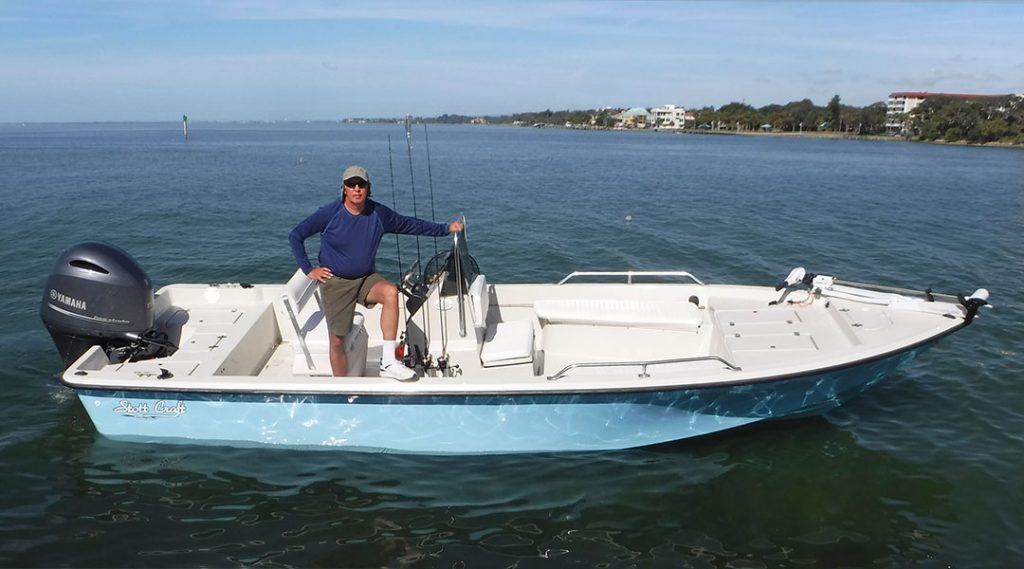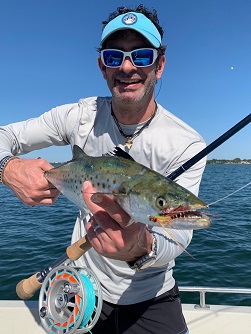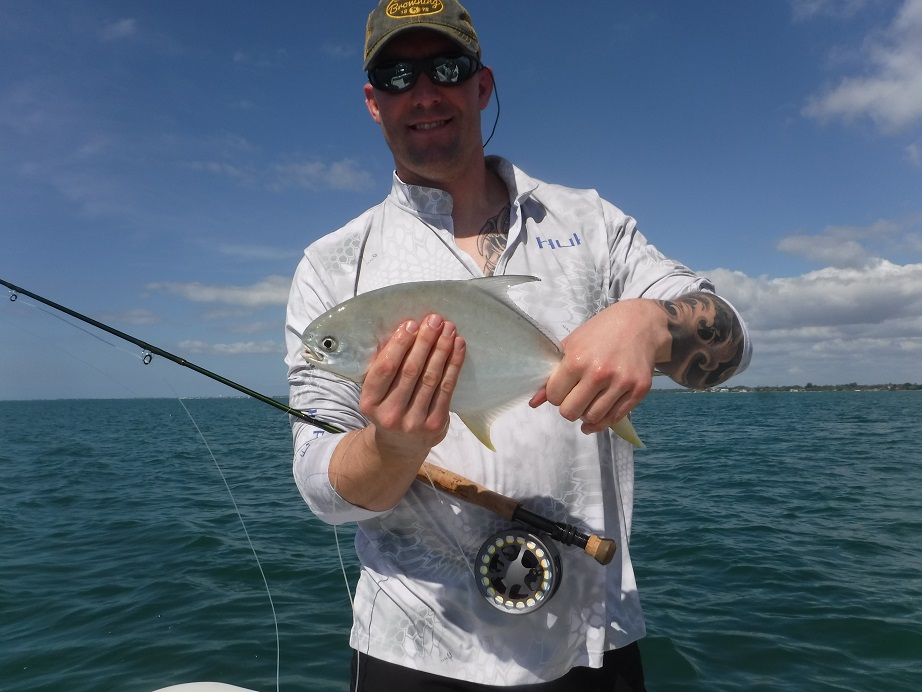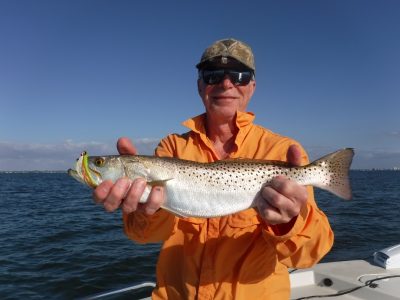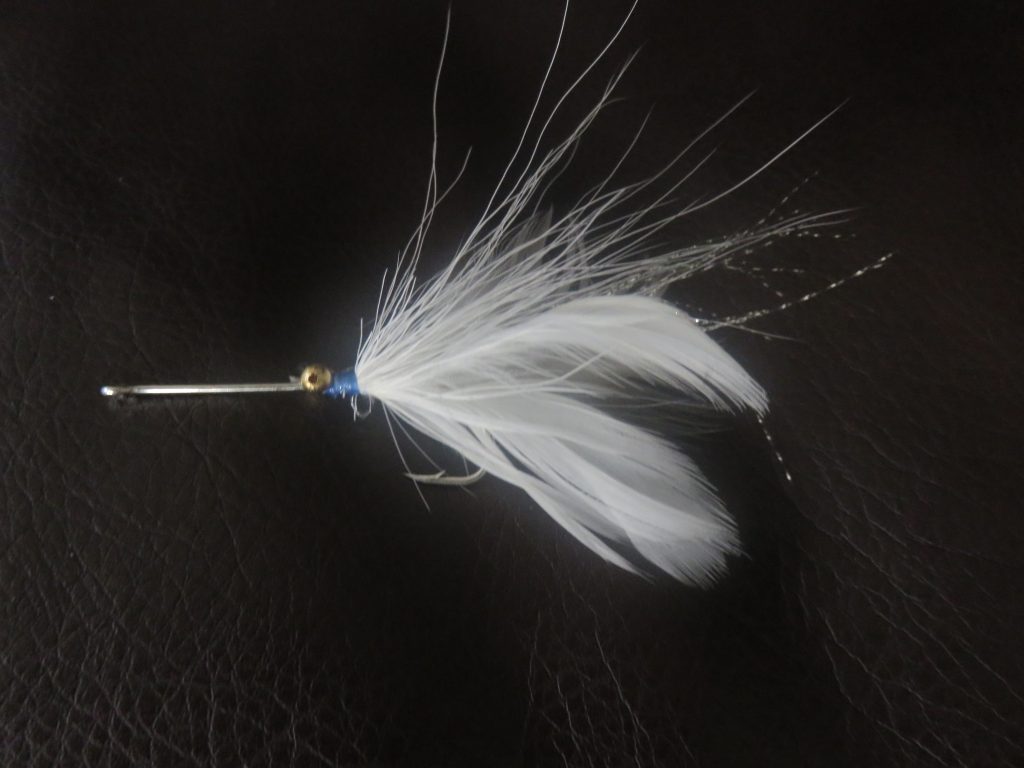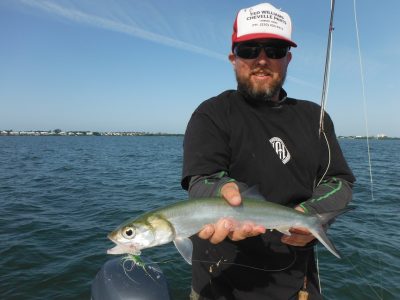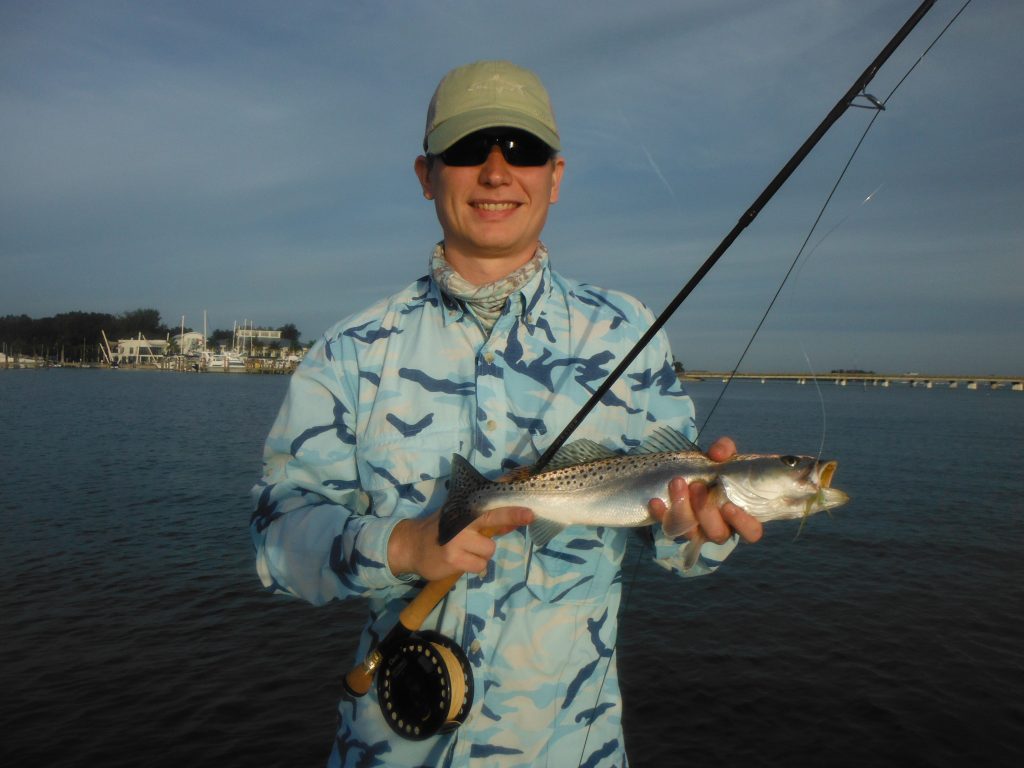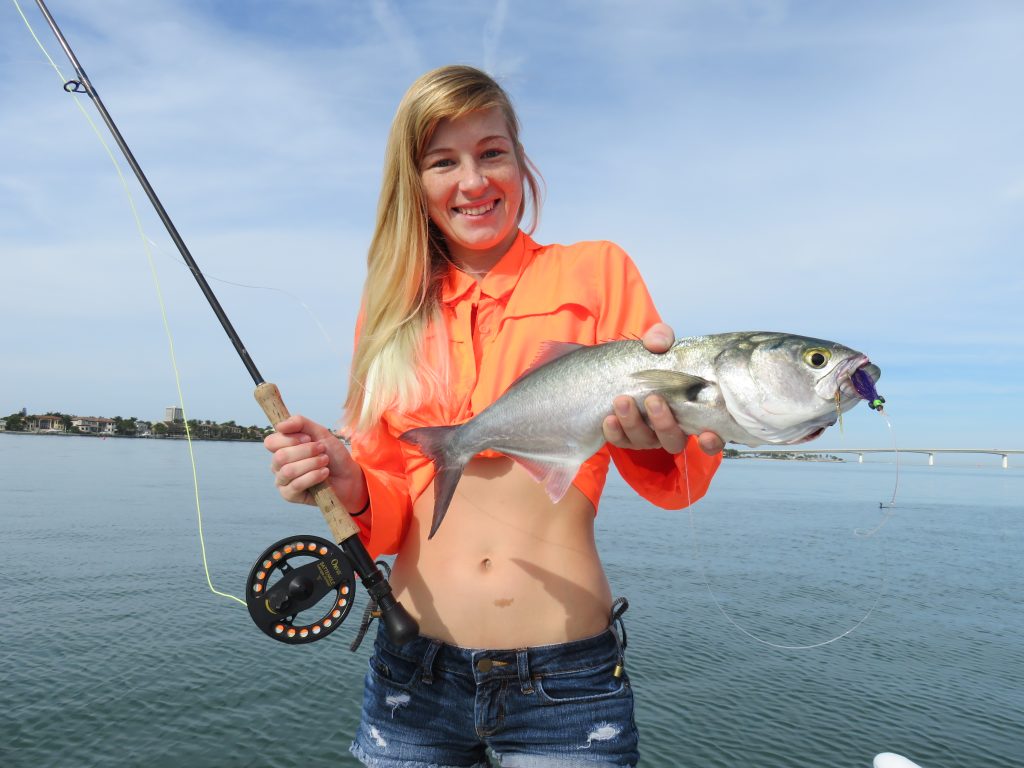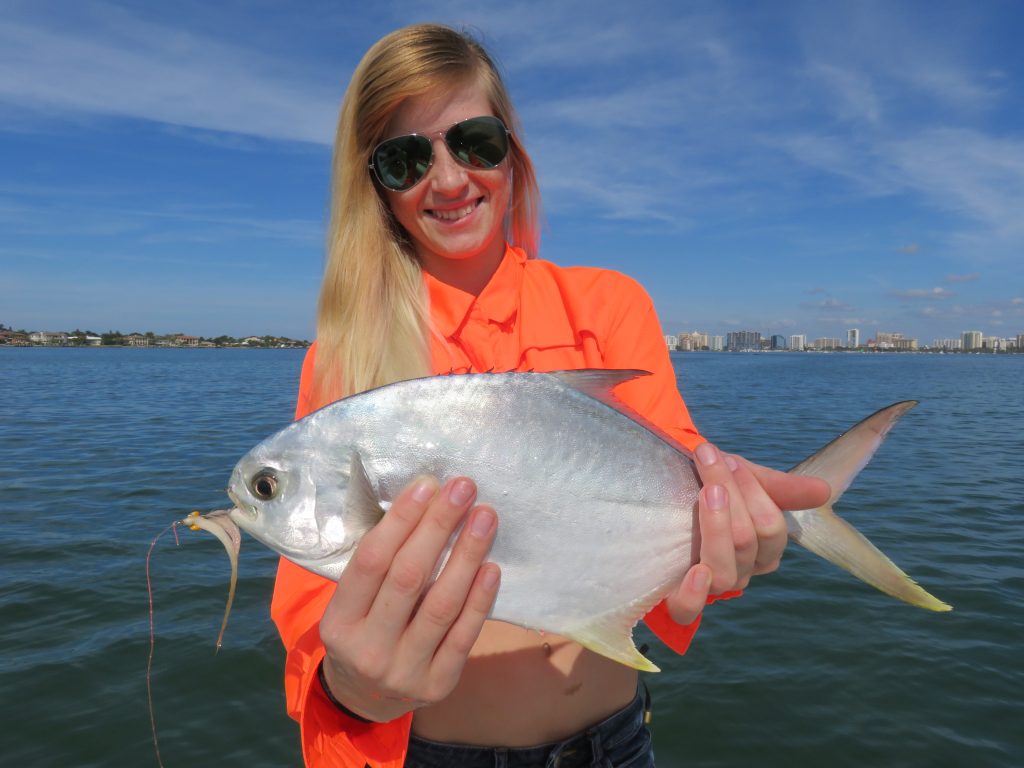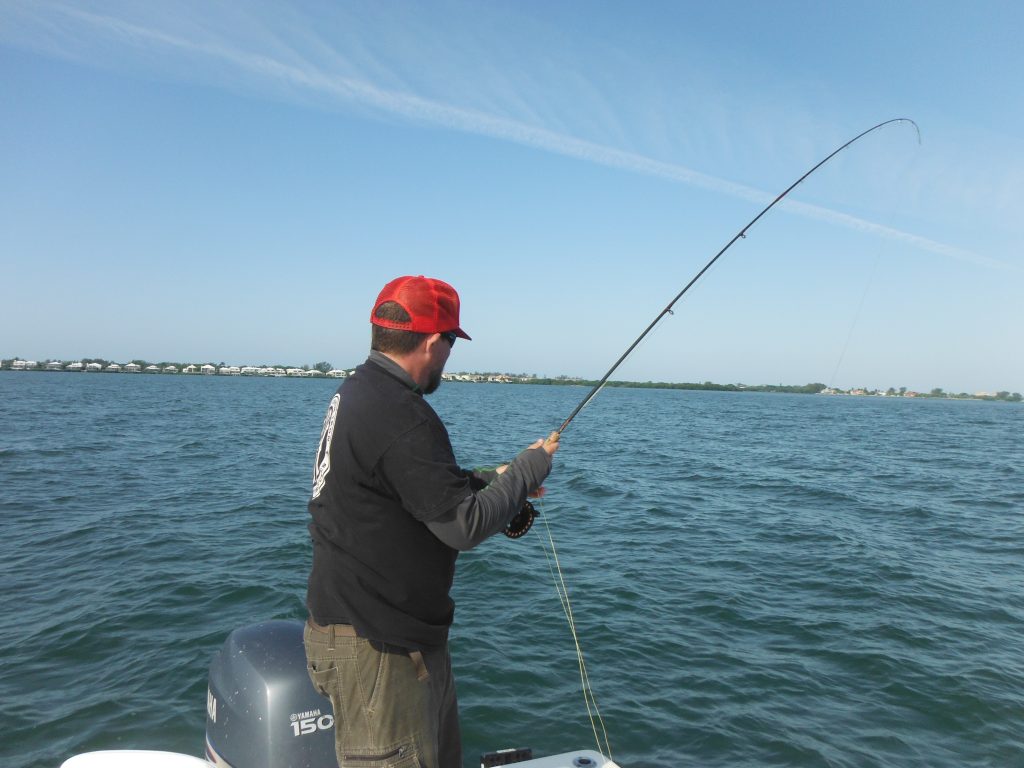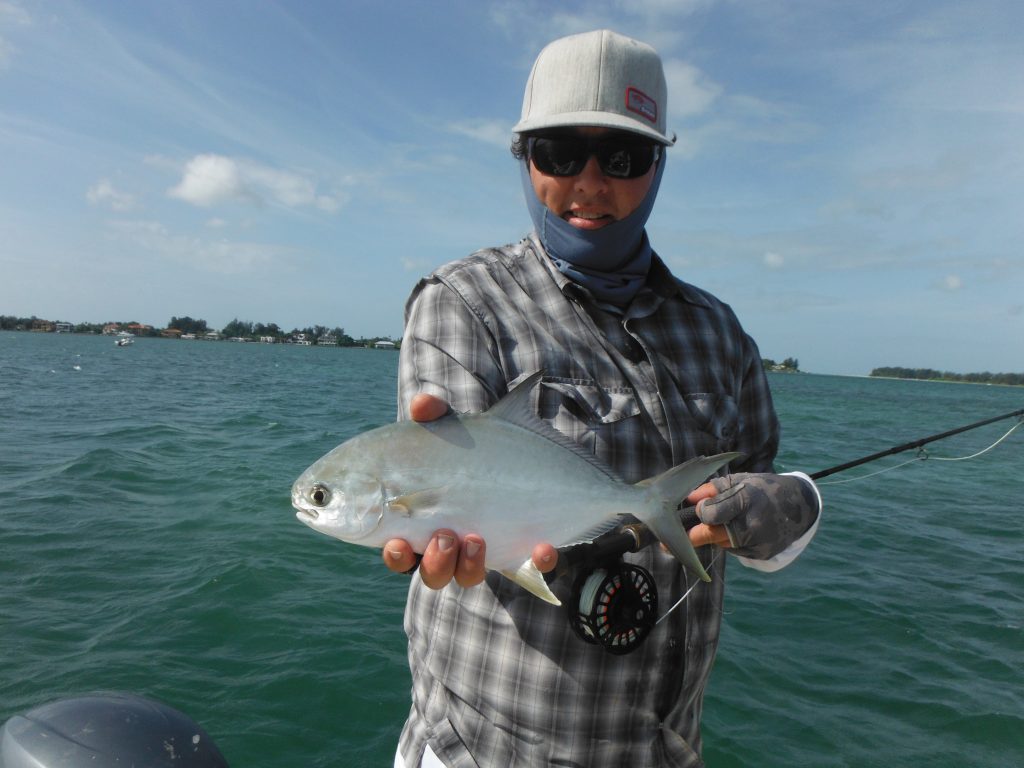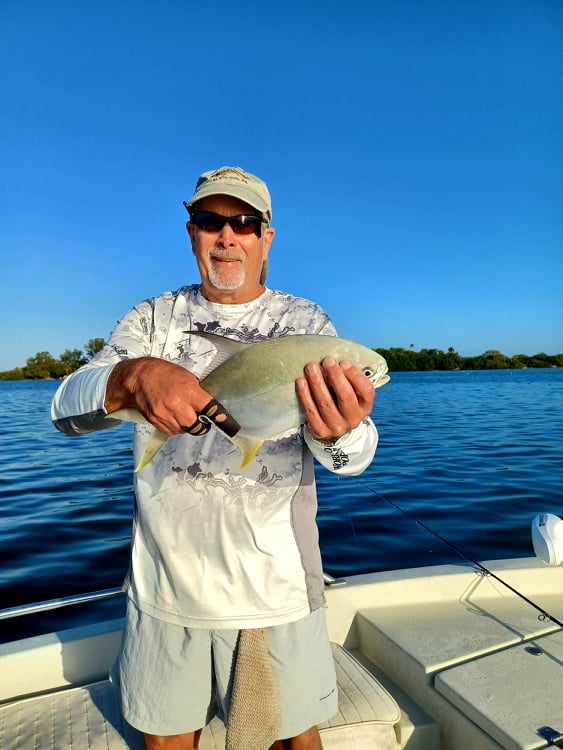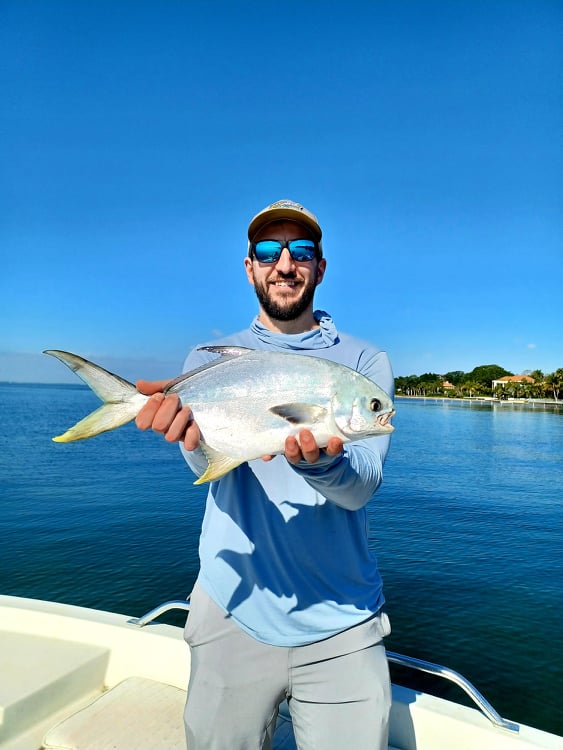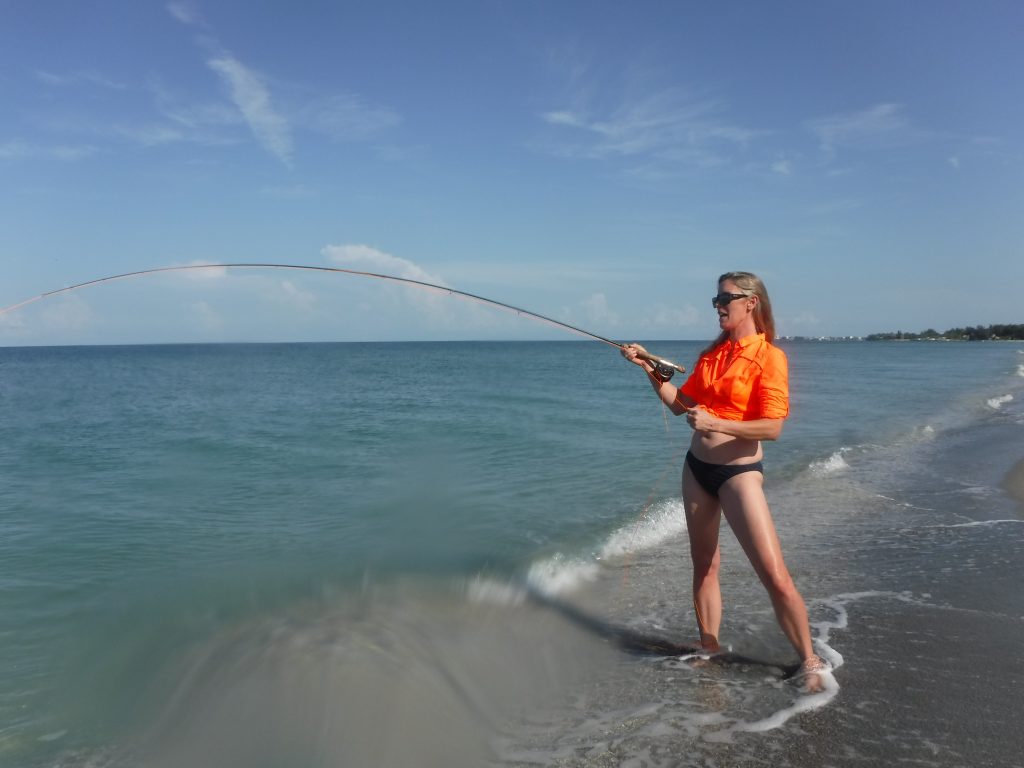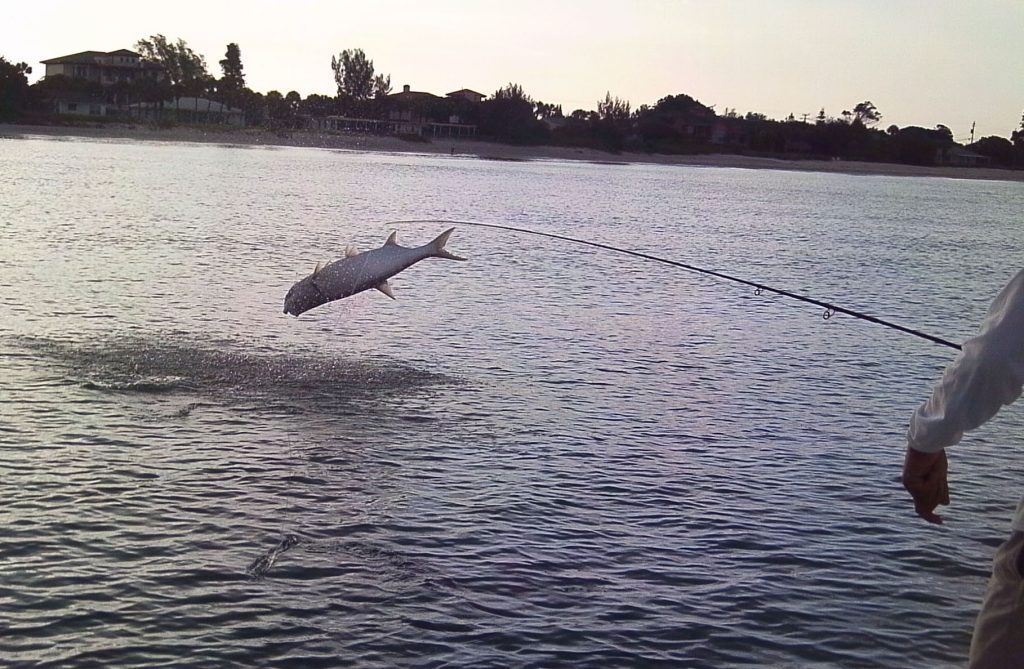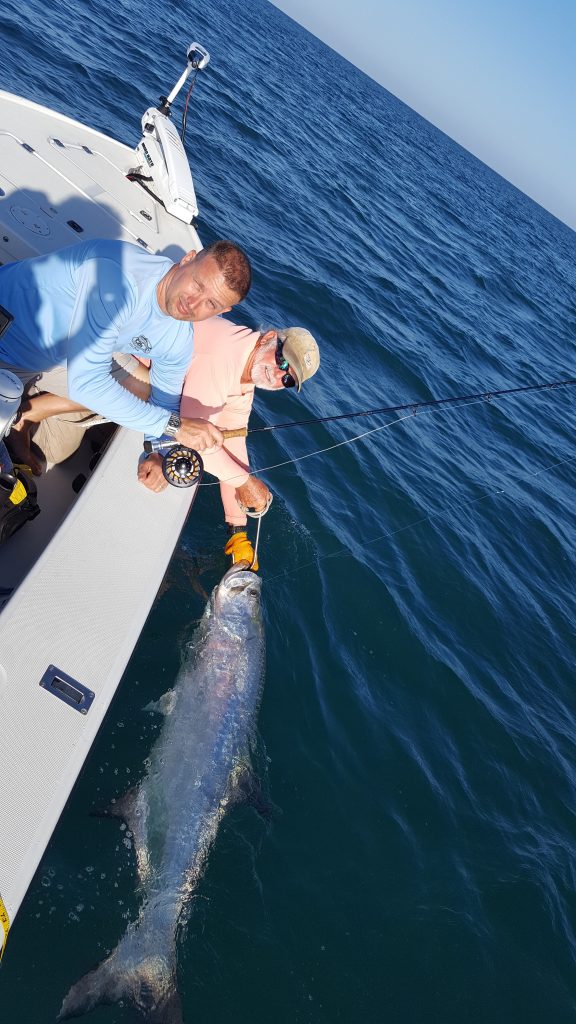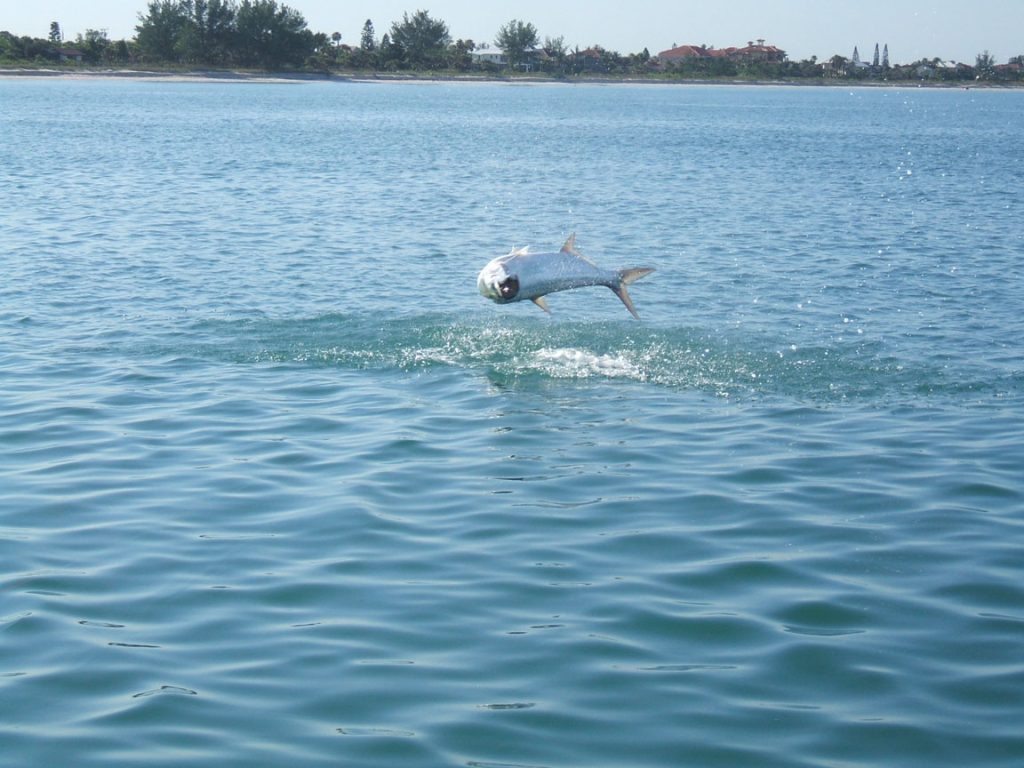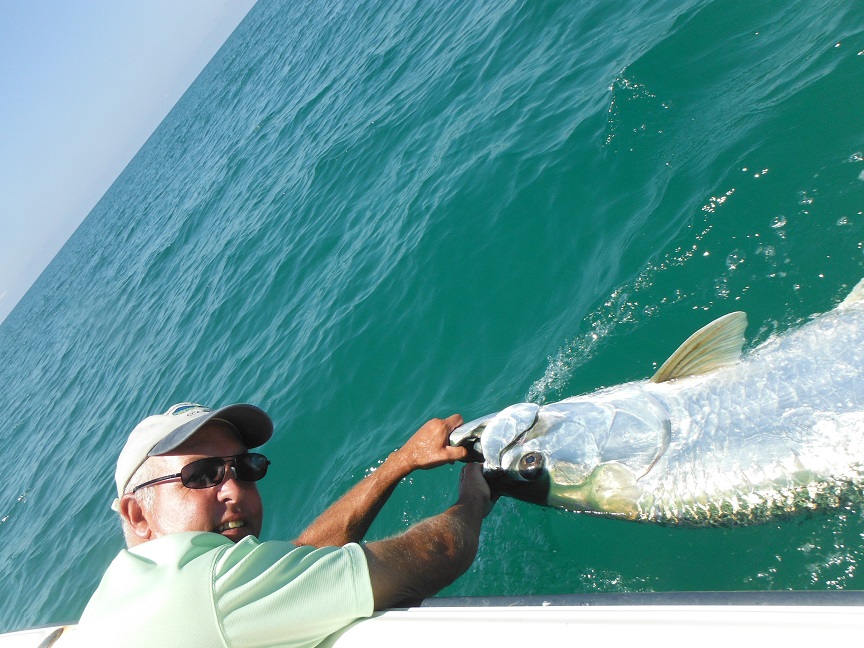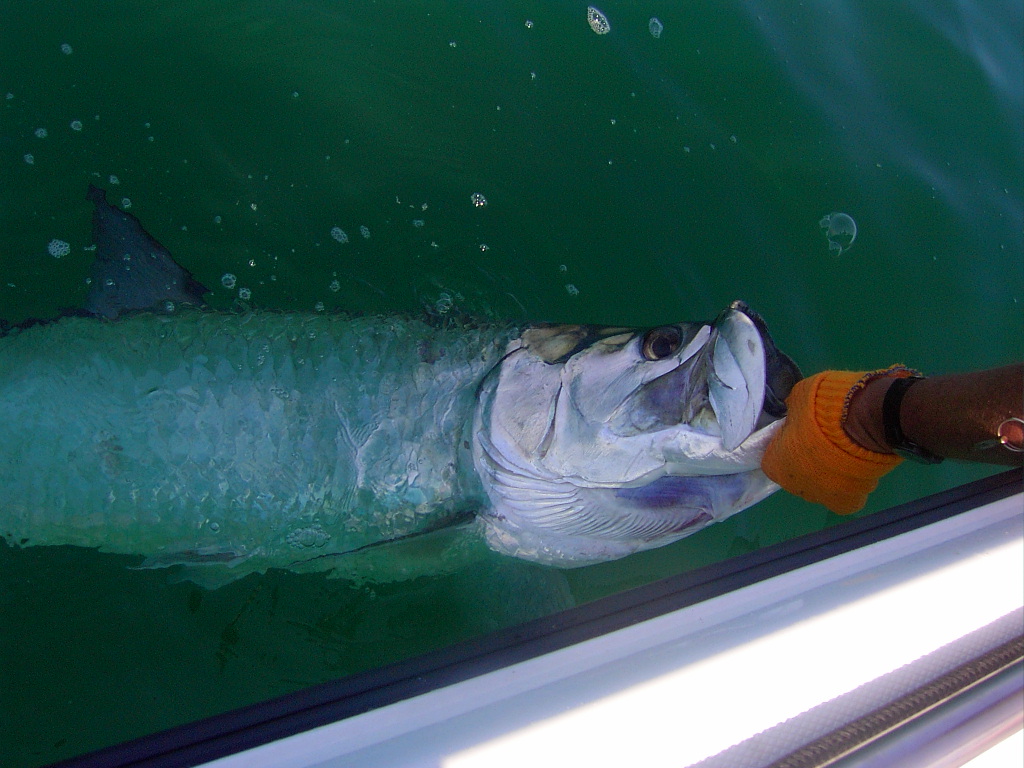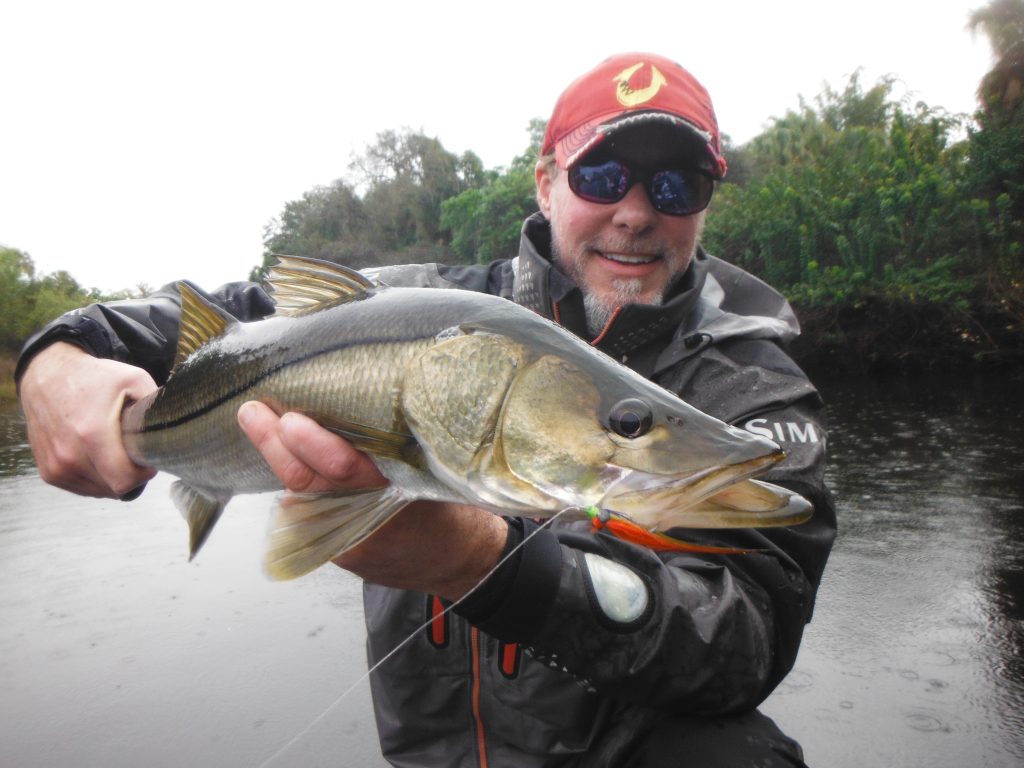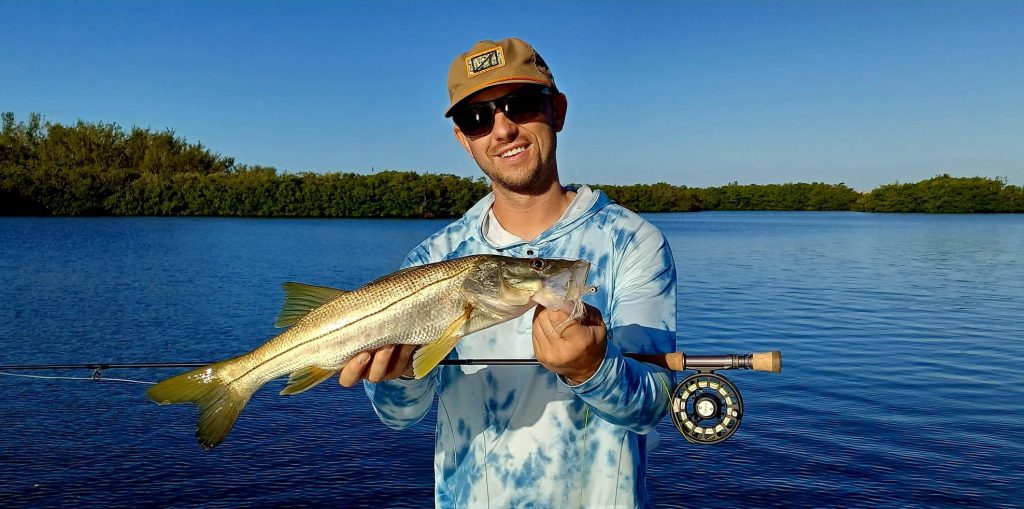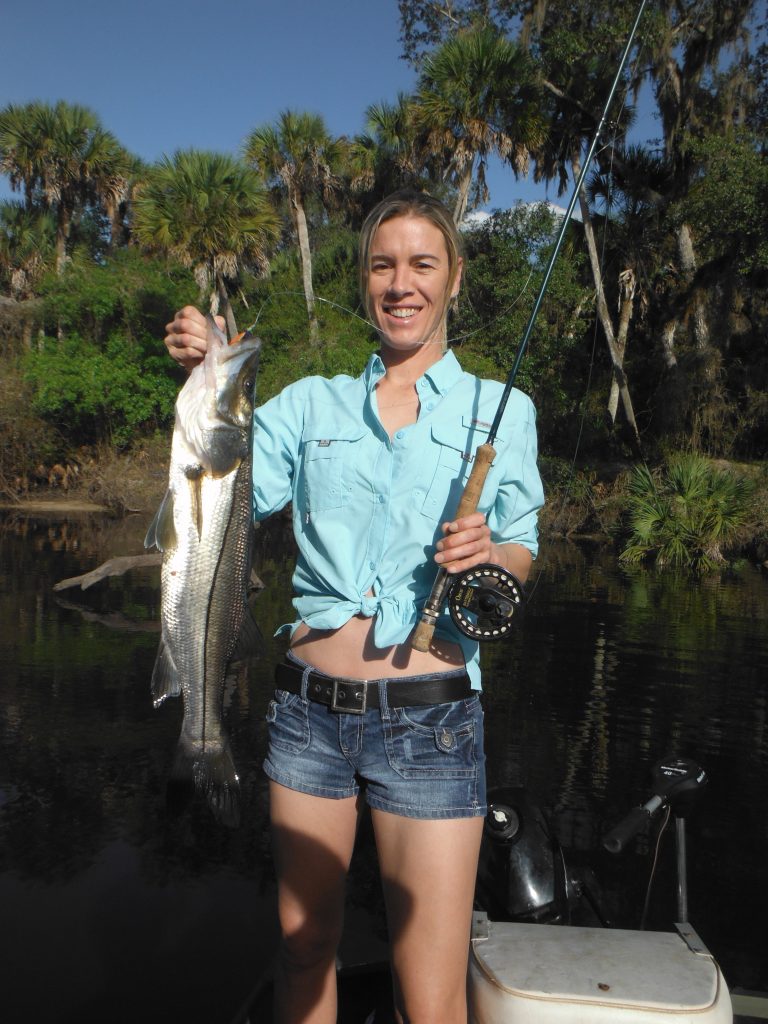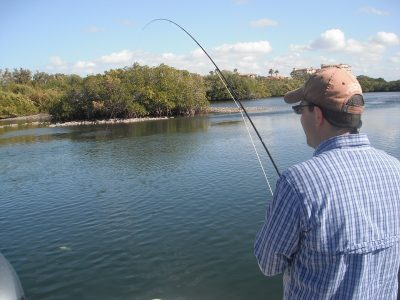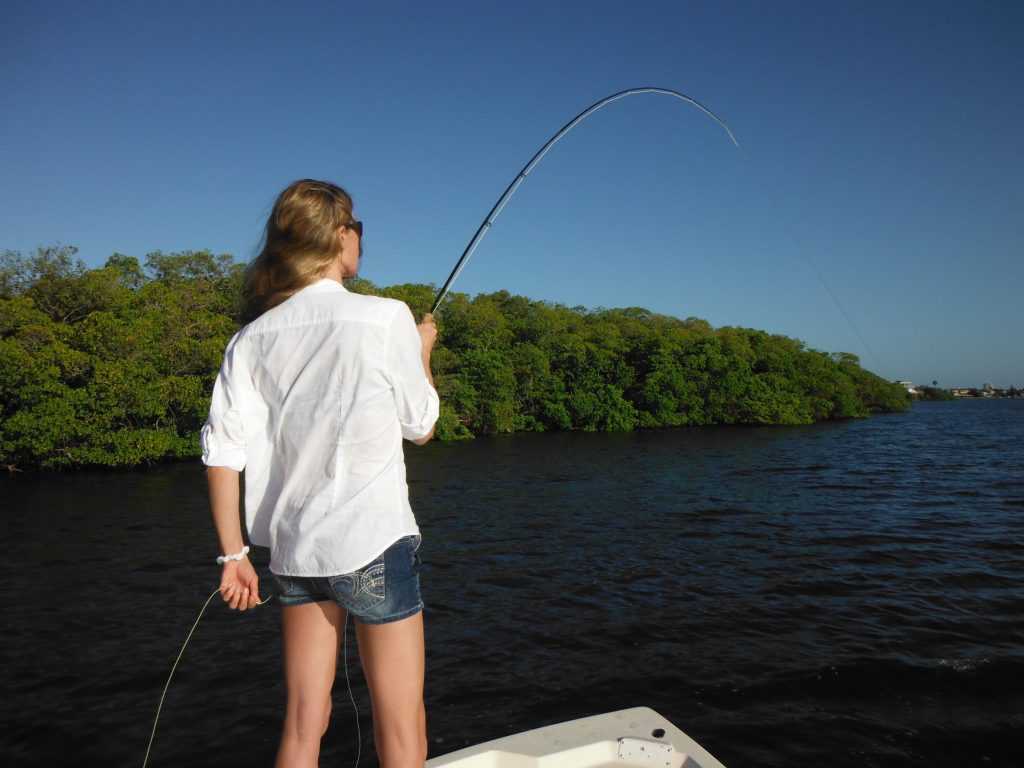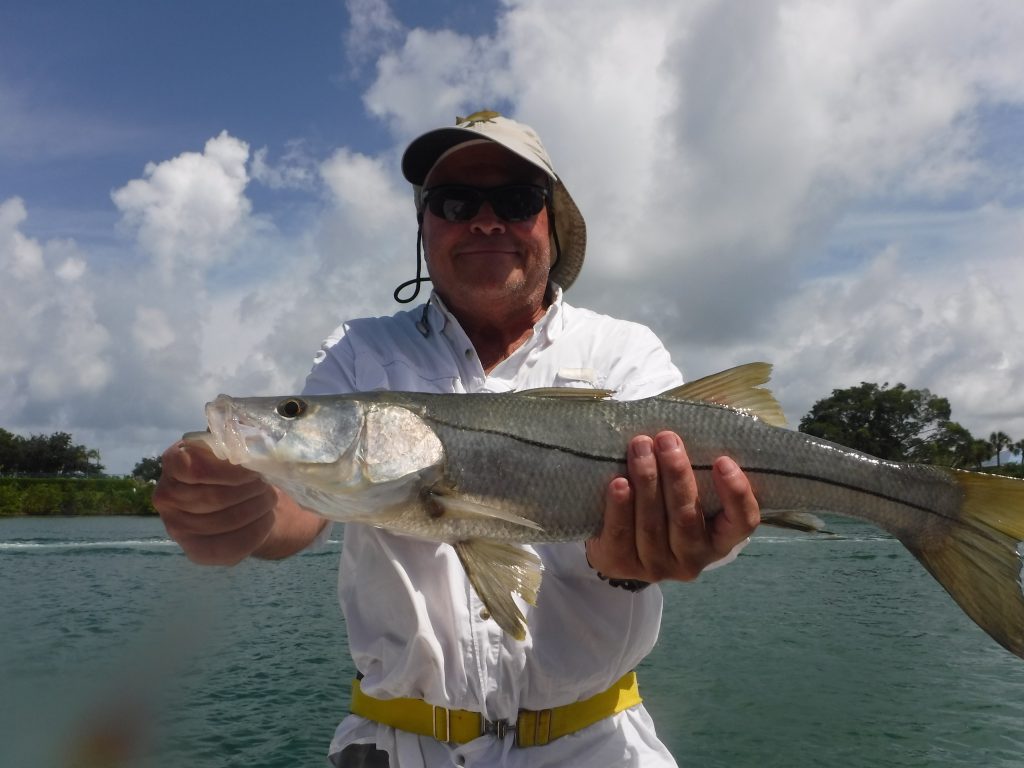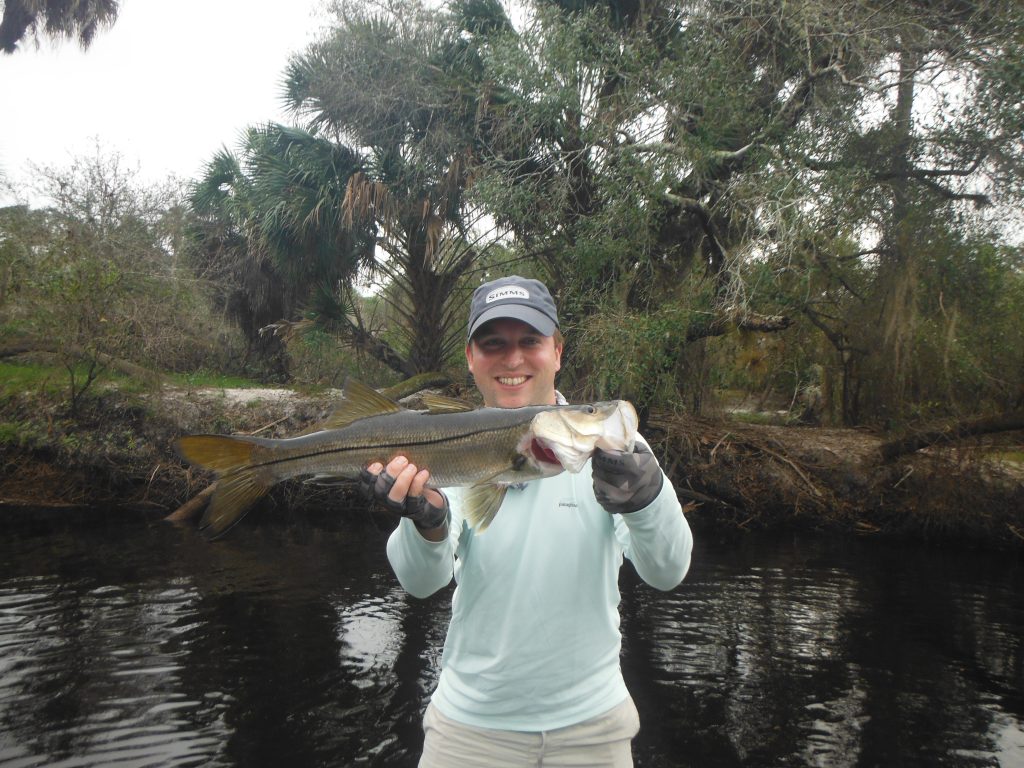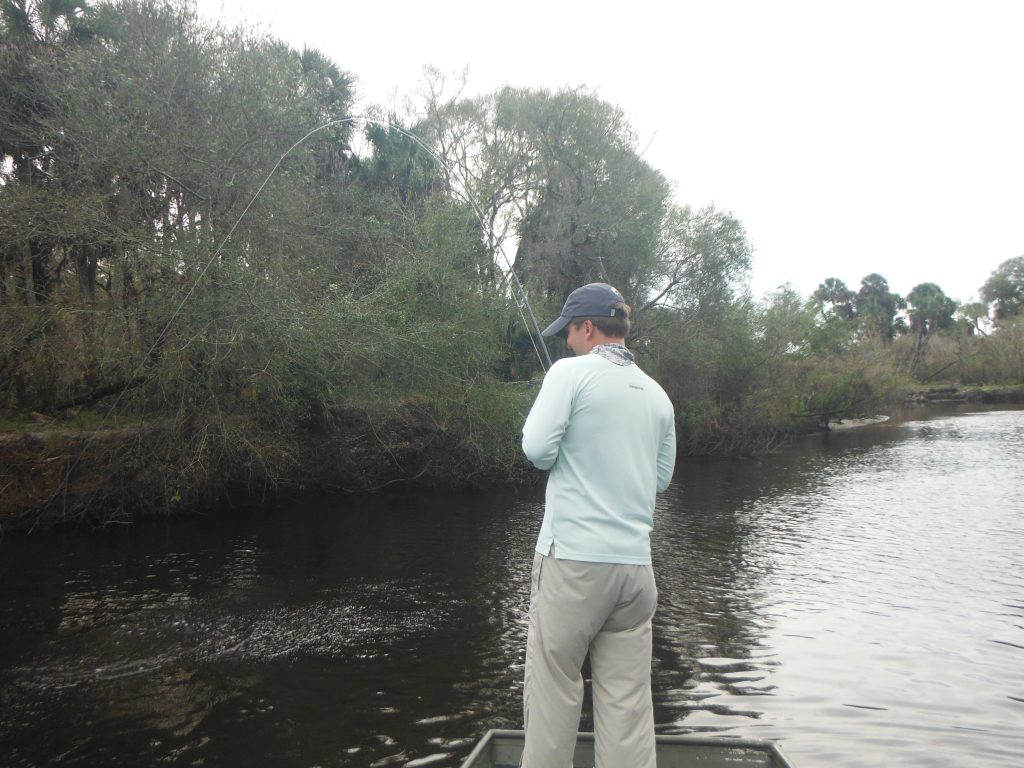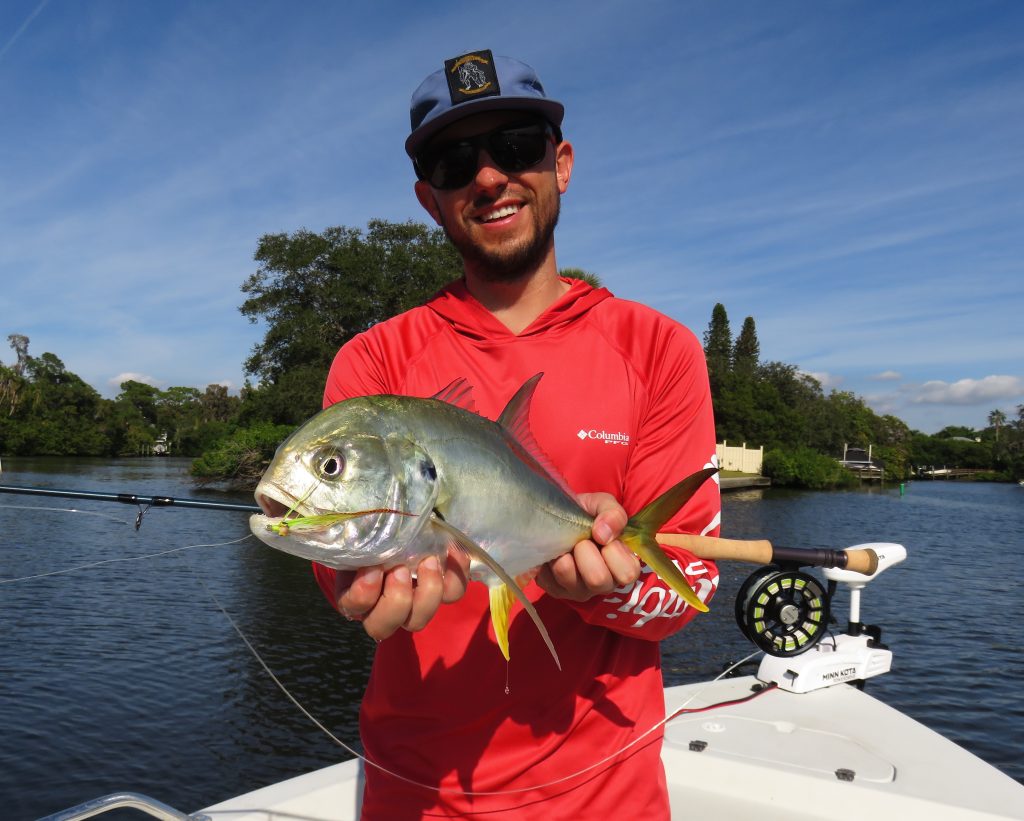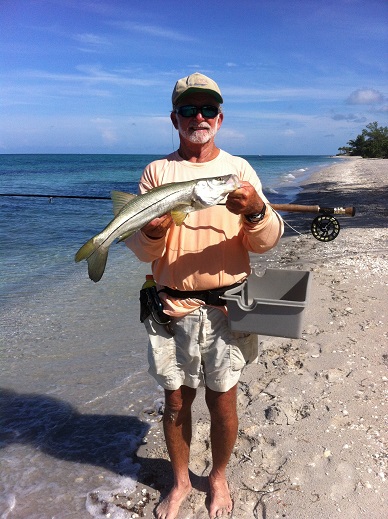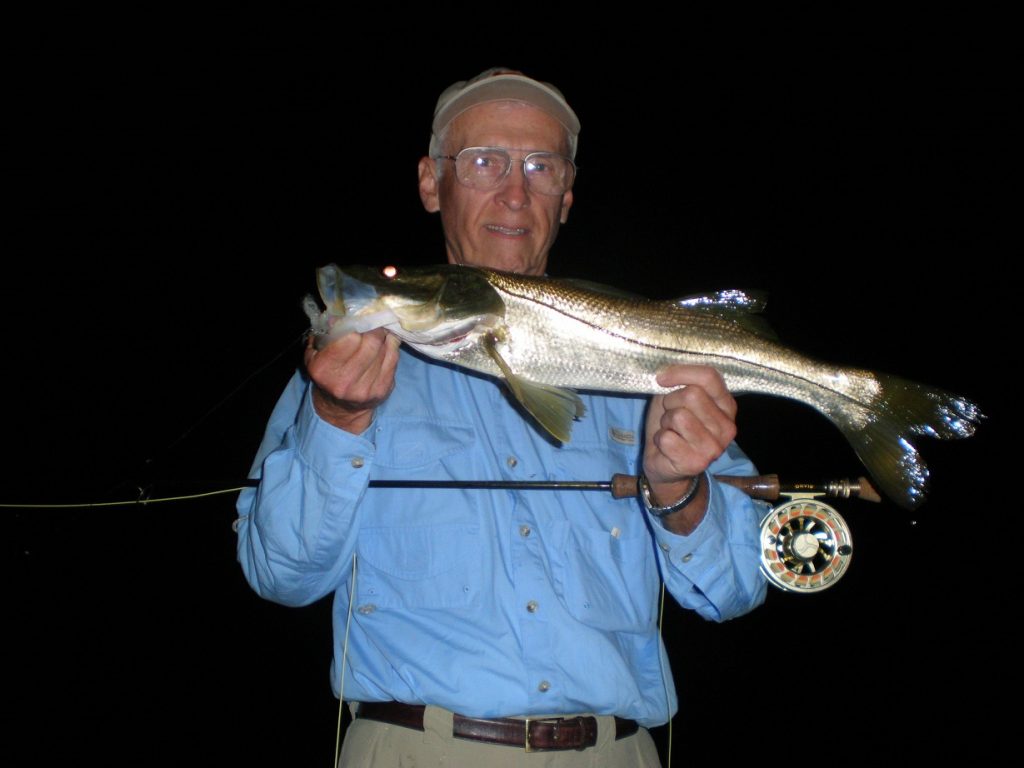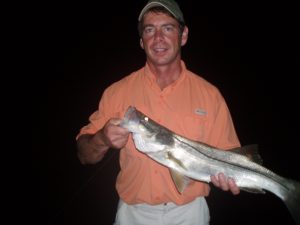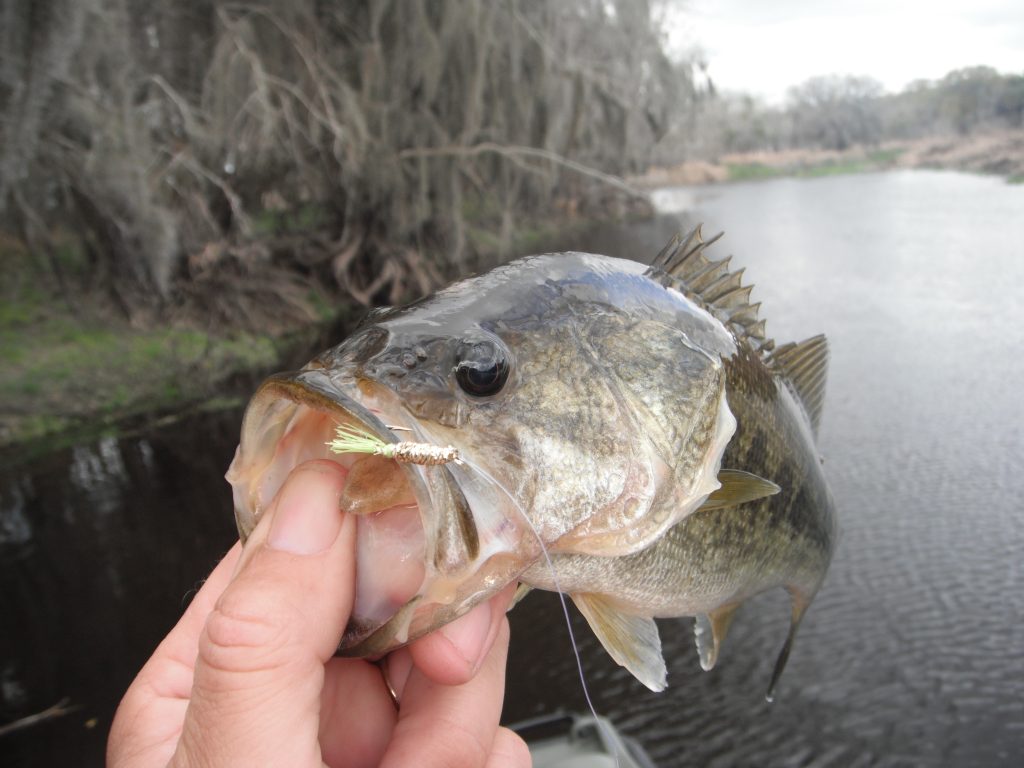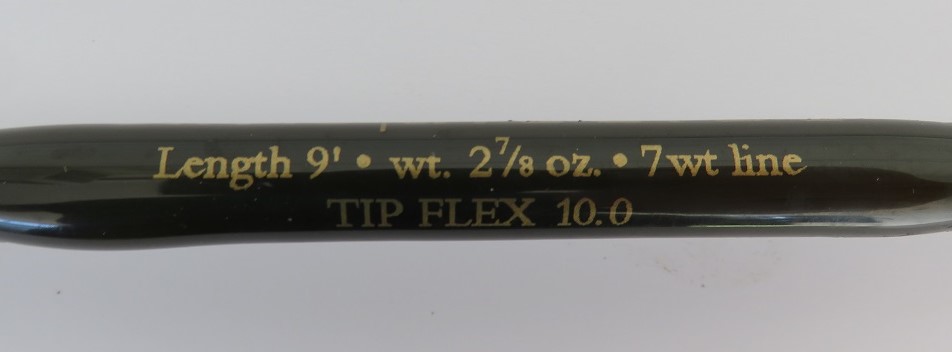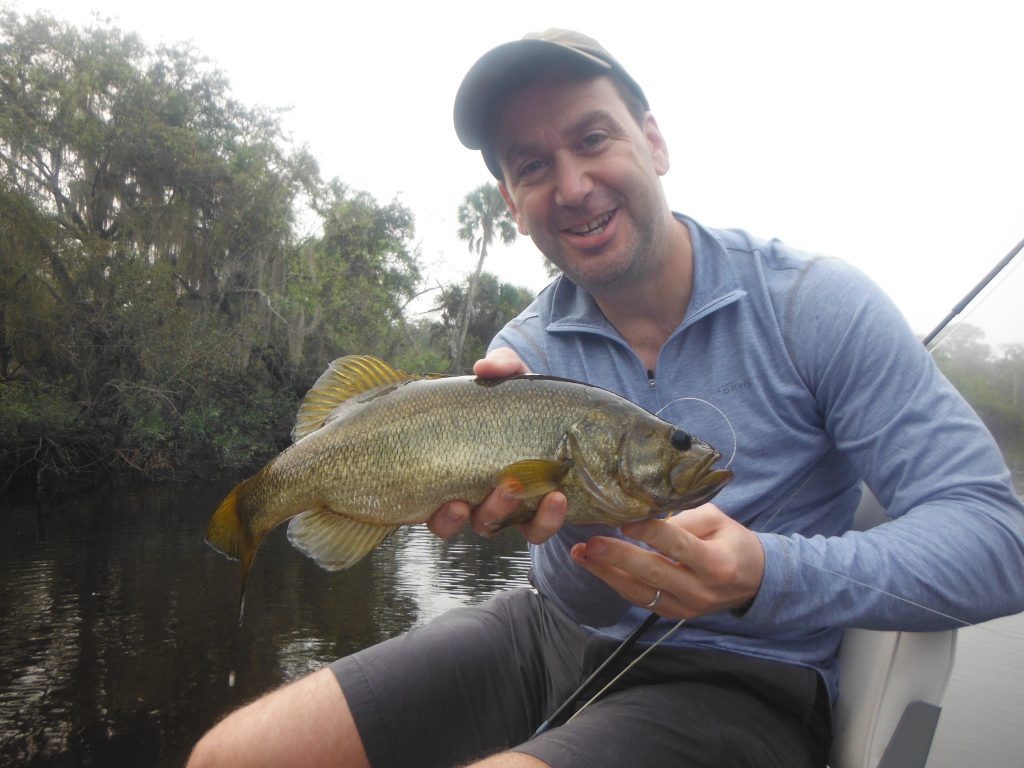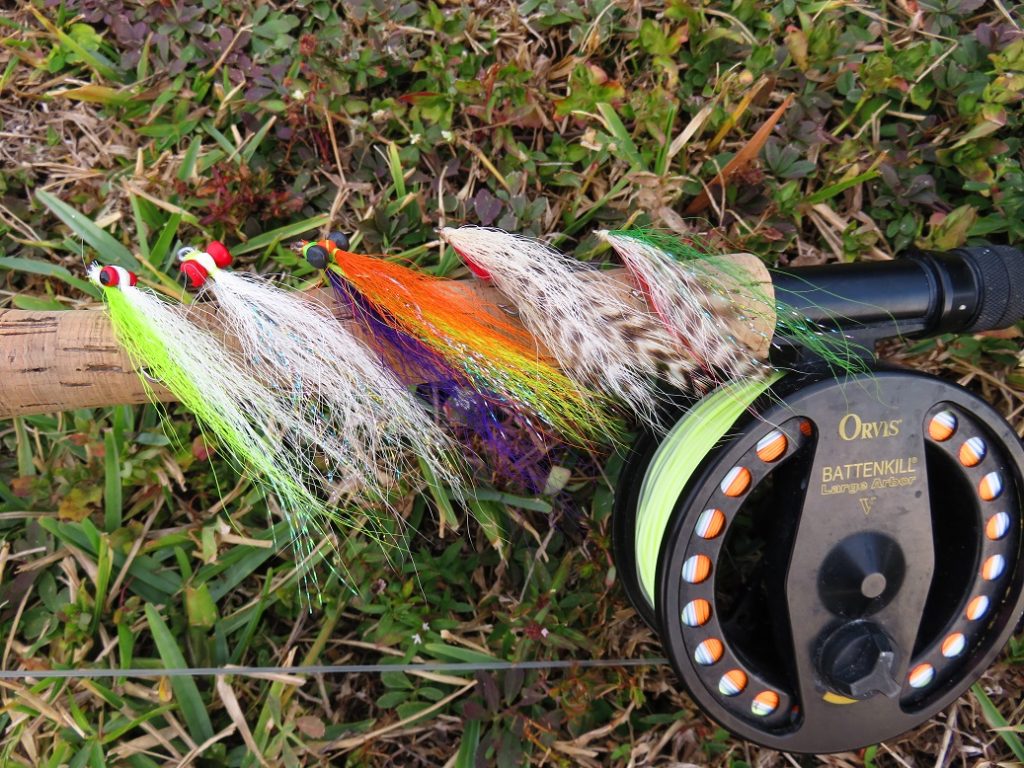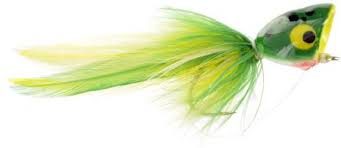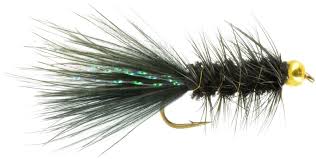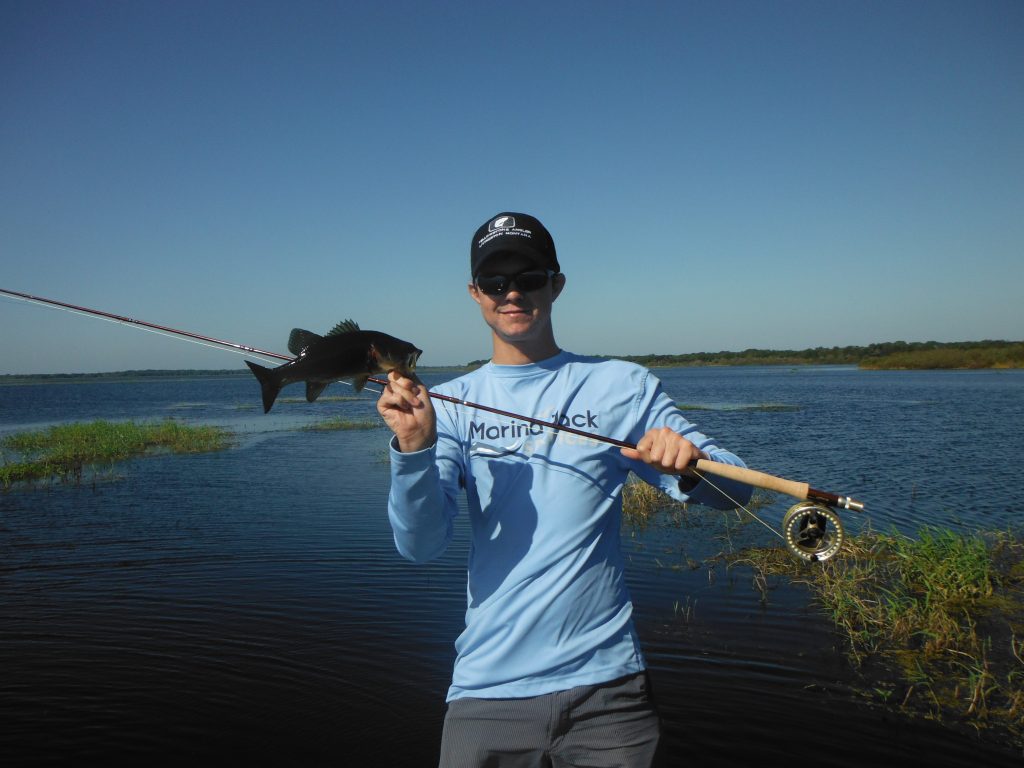
Best 7 Patterns for Fly Fishing in Sarasota
In this article I will list my best 7 patterns for fly fishing in Sarasota. Fly selection can be critical to success when fly fishing. There are several considerations to consider when choosing a fly. Size, color, design, and weight are the primary factors. However, it really is not that complicated, especially in saltwater fishing.
Saltwater flies basically mimic either bait fish or crustaceans such as crabs and shrimp. Many flies do a good job of both, depending on how the fly is used. This is especially true for weighted flies, which sink can be worked in a variety of retrieves. These are obviously quite versatile. Other flies specifically imitate one or the other.
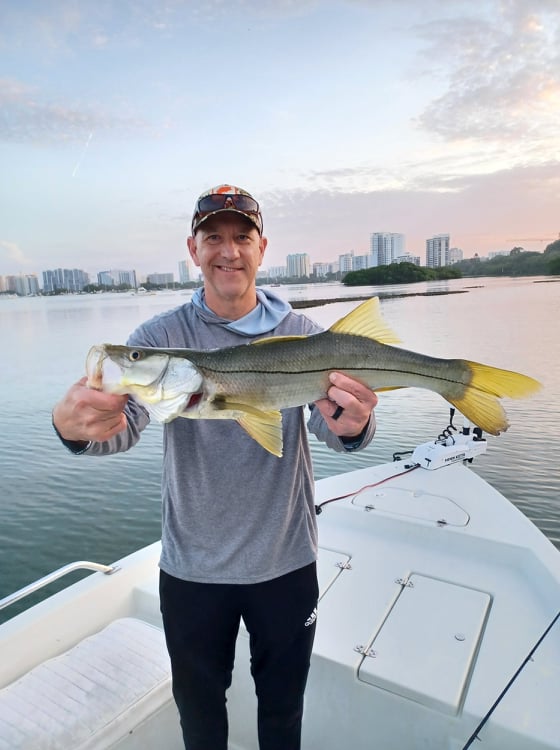
My name is Capt Jim Klopfer and I run fly fishing charters in Sarasota. I have been guiding since 1991. In this article, I will simplify the fly selection process by narrowing it down to a handful of fly patterns.
Best 7 patterns for fly fishing in Sarasota

In this article I will list my best 7 patterns for fly fishing in Sarasota. Fly selection can be critical to success when fly fishing. There are several considerations to consider when choosing a fly. Size, color, design, and weight are the primary factors. However, it really is not that complicated, especially in saltwater fishing.
Saltwater flies basically mimic either bait fish or crustaceans such as crabs and shrimp. Many flies do a good job of both, depending on how the fly is used. This is especially true for weighted flies, which sink can be worked in a variety of retrieves. These are obviously quite versatile. Other flies specifically imitate one or the other.
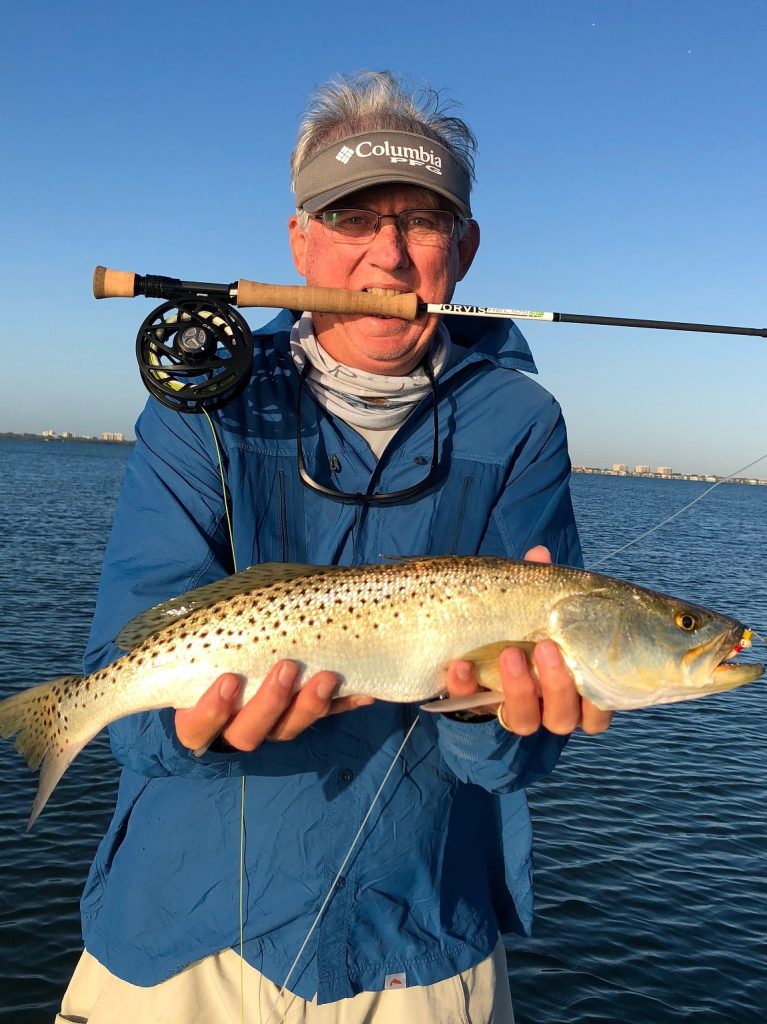
There are countless fly patterns that anglers can choose from when fly fishing in saltwater. Many are weighted, some are not. In my opinion, location and presentation are more important than fly selection in many cases. Getting the fly down to the proper depth is extremely important!
My top 7 patterns for fly fishing in Sarasota are;
-
Clouser Deep Minnow
-
Crystal Minnow
-
D.T. Special
-
Spanish mackerel variation
-
Lefty’s Deceiver
-
Got’cha
-
Gurgler
These seven fly patterns will catch every game fish found in Sarasota (and all of Florida) under every circumstance that an angler will encounter.
Clouser Deep Minnow
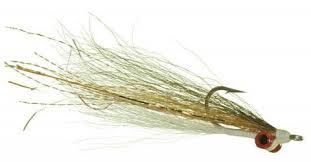
The Clouser Deep Minnow (Clouser for short) is without a doubt my favorite fly, both is freshwater and saltwater. It was designed by Bob Clouser for catching smallmouth bass in the Susquehanna River. It can be tied to imitate just about any type of forage, from bait fish to crabs and shrimp.
The Clouser is basically the fly version of a buck tail jig. It uses weighted eyes to determine the depth that it will run. In most cases, two colors are used. My favorite combination is white over chartreuse with some copper flash tied on a #1 hook. However, the fly can be tied in any size or color.
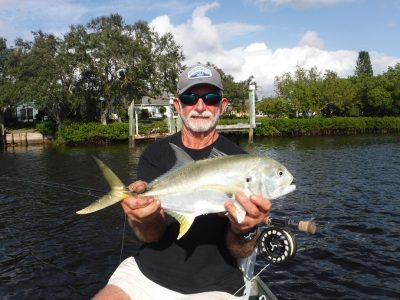
The Clouser has an enticing action in the water. A strip will jerk the fly forward, then it will fall and flutter on the pause. It is deadly on a wide variety of saltwater species. I generally use a fairly heavy fly on an intermediate sink tip line as I often fish deep grass flats in water around 6-8 feet deep. The fly runs with the hook up, reducing snags. When fishing shallow water, I use a floating line and small eyes.
Crystal Minnow
The Crystal Minnow is another excellent and versatile fishing fly. It is very similar to the Schminnow. It has a body and tail. The fly generally is tied using lighter eyes, often bead chain. This results in the fly working hook down. It is most often tied in white, but can be tied in a wide variety of colors.
The Crystal Minnow is a very versatile fly. It works great at night when fishing the lighted docks and bridges for snook and other species. It is also very effective when sight fishing for snook on the beach. I use them when chasing false albacore and they are fussy. Finally, it works on the flats in fairly shallow water.
D.T. Special
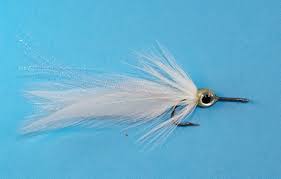
The D.T Special is an excellent unweighted bait fish fly. It works great in open water for a variety of species. It is my favorite beach snook fly. It also works great in the creeks in the cooler months for jacks and snook. False albacore will take it as well. I do use it on the deep flats occasionally, when fish are high in the water column. I like larger flies on a #1/0 hook.
Spanish mackerel variation
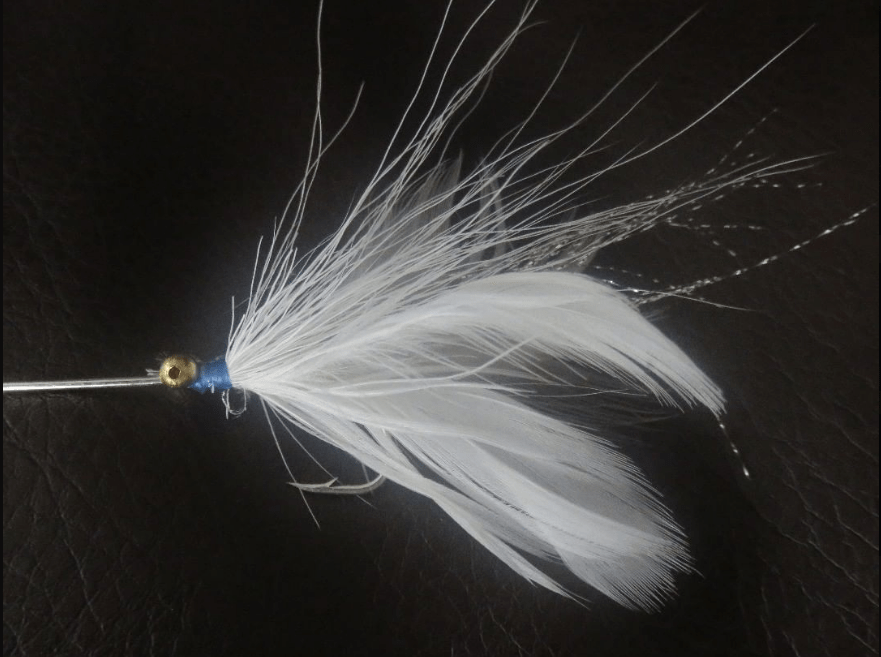
This fly is a variation of the D.T. Special. It is specifically for bluefish and Spanish mackerel. I tie the fly on a long shank hook, which acts like a leader and drastically reduces cut-offs. I usually use bead chain eyes, but dumbbell eyes can also be used. I almost always tie it in white and work it aggressively in the water.
Lefty’s Deceiver
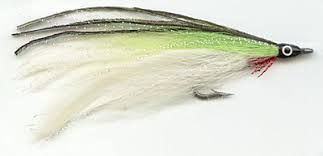
The Lefty’s Deceiver is a classic streamer fly that is used extensively in freshwater and saltwater fly fishing. It was invented by legendary fly tier and angler Lefty Kreh. It is a perfect bait fish imitation and is unweighted. The only reason that I do not use this fly more often is that they take quite a bit more time to tie, and I have good success with other patterns. That said, this fly belongs in every fly anglers box.
Got’cha
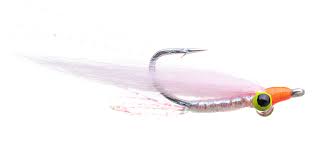
The Got’cha is a perfect crustacean imitating fly. It is similar to a Clouser and rides with the hook up. This fly is excellent for shallow water fishing for redfish. I use it extensively when fishing for bonefish in other parts of the world. It is tied sparsely with light bead chain eyes. I like natural colors and a #4 hook.
Gurgler
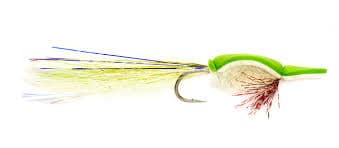
I do not fish with surface flies, perhaps this is an oversight that I should rectify. Poppers can be quite wind resistant and difficult to cast. Therefore, I like to go with a gurgler fly. It casts easier while still putting out quite a bit of commotion. Natural colors with white on a #2 hook work well.
Best tackle for fly fishing in Sarasota
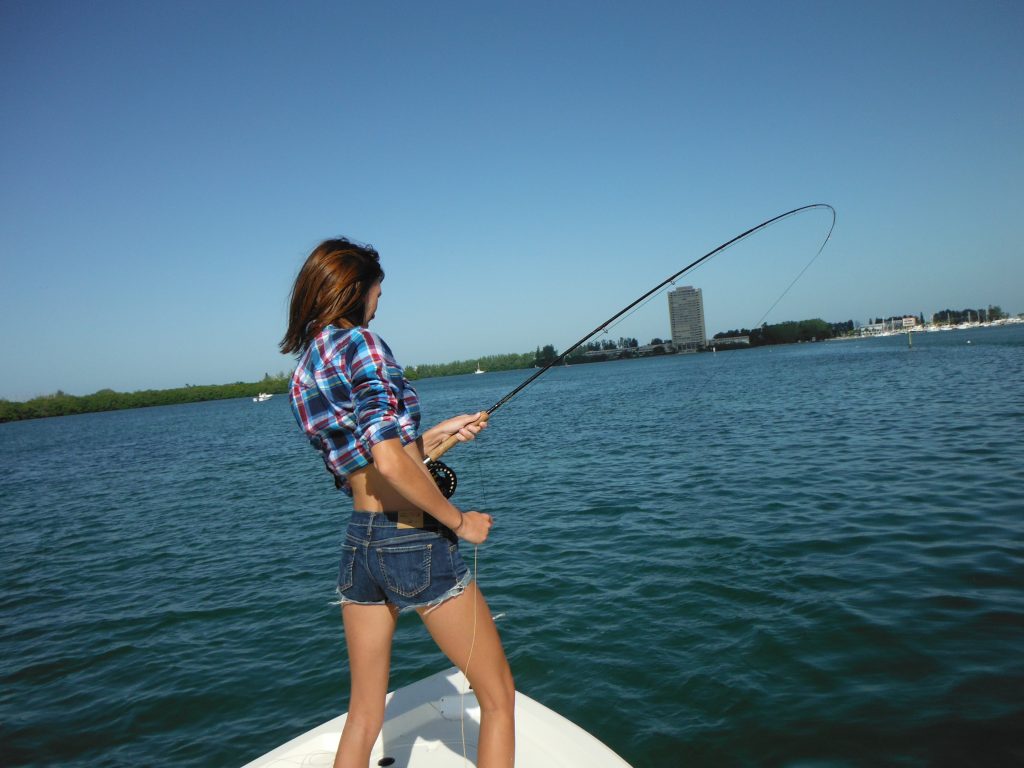
I will briefly discuss the fly tackle that I use on my fly fishing charters in Sarasota. On most trips, I use an 8wt Orvis Recon with an intermediate sink tip line. I will drop down or go up a size if conditions dictate, such as wind and size of the fish. Floating lines are used in shallow water and sometimes out on the beach. For leaders, I keep it simple and use 5 feet of 50 lb butt section and then 4 feet of 30 lb tippet.
In conclusion, this article on my best 7 patterns for fly fishing in Sarasota will help simplify fly selection for anglers!
